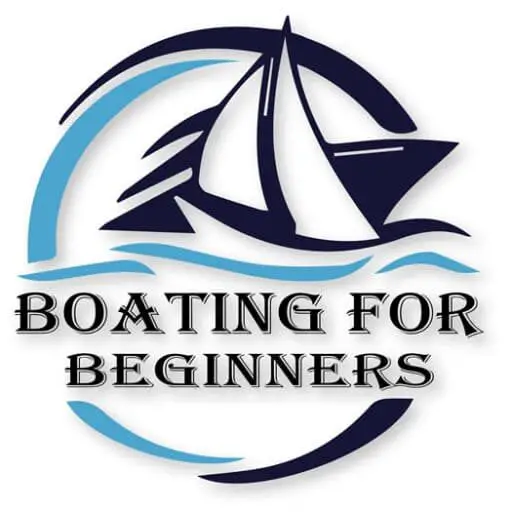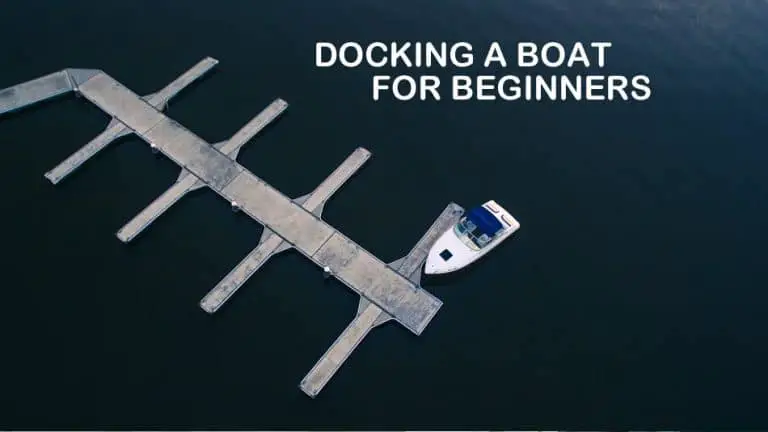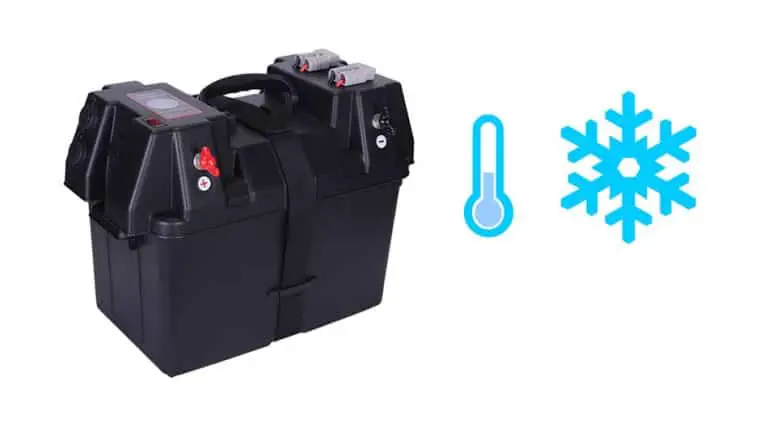Nautical Terms – Boating Words Every Sailor Should Know
What Are Nautical Terms?
I can still remember going on a boat trip with a friend who was a sailor and a boat expert. He kept mentioning these strange words to his assistant while trying to control the boat. I had almost lost my interest in sailing until my friend walked over and had to put me out of my misery. For the first time, I heard the nautical phrase terms, i.e., a vocabulary for the boat or terms used when sailing.
Better still you might want to ask most simply, what are nautical terms???
Nautical terms are also known as sailing terms. They are listings of various words associated with ships, boats, and sailing. It’s the same way we use catering terms when catering and scientific terms when writing or describing an object in science.
Funny Nautical Terms
In as much as sailing can be educative, it can also be humorous. I thought I had heard it all but telling me the nautical terms were wasn’t enough when my friend began using these hilarious terms over and over. I could remember myself bursting into a long-term of laughter whenever he mentioned the word “poop deck” or when he described the toilet of the boat as the head.
I took the time to note down the following funny nautical terms; I am sure they will get you giggling soon:
- Abreast: Used when two boats lay together in a way the bible would probably frown at.
- Poop deck: You should be thinking of the rest-room, but it’s not, it’s just the part of the boat you get to roam about freely, it’s a standard rude term used in boating.
- Jacob’s ladder: Now this is supposed to be the title of a famous movie I once saw at the cinema, but in this case, it’s just a rope ladder.
- Screw: This is talking about the propeller.
- Ground tackle: Sounds like a term used in sport, but it’s just another hilarious term for the anchor and associated bits and bobs.
- Porthole: It merely means “I’m having a panic attack.”
- Flange: I am scared.
Common Nautical Terms
Away from the humor, if you are looking to become an expert in boating or sailing, or you want the sailing education, then you must try to get familiar with some common nautical terms. Knowing these terms will make it easier to communicate with people aboard the ship. The essence is neither to boast nor impress your friends but helps to stay safe on water especially during an emergency when you might have to take sets of instructions using these terminologies.
Here are some common nautical terms:
- Bow: This refers to the front end of the boat.
- Forward: This is used when you are moving toward the front end of the boat [bow].
- Aft: Used to describe your movement towards the rear end of the boat, more like saying someone is going “aft.”
- Ahead: Refers to the movement of a boat in a forward direction.
- Astern: Refers to the backward movement of a boat.
- Topside: Moving from the lower deck of the boat to the upper deck of the ship.
- Amidships: Refers to the central part of a boating vessel.
- Port Quarter: This is the rear left side of the boat.
- Starboard Quarter: Refers to the rear right of the boat.
- Port Bow: This is the front left side of the boat.
- Starboard Bow: This is the front right of a boat.
- Starboard: When standing at the rear of the boat and looking forward, starboard is the entire right side of the ship.
- Port: When standing at the rear of the boat and looking forward, the port is the entire left side of the ship.
- Leeward: This is also known as “Lee,” it’s the direction opposite to the movement of the wind.
- Windward: This is the direction in which the wind is currently blowing; it is the opposite of “lee.” Sailboats usually move in the direction of the wind, and this makes it an essential term to note.
- Boom: The boom is the horizontal pole which extends from the bottom of the mast, manipulating the boom to the direction of the wind helps the boat to harness the power of the wind for forwarding or backward movement.
- Stern: This is the rear end of the boat.
- Underway: A boat is referred to as being “underway’ when it is moving, either by a motor or by the energy provided by the wind.
- Rudder: This is located beneath the boat; it is a flat piece of wood, fiberglass or metal used to steer the ship. Bigger boats control the rudder with a wheel while the small boats use the steering mechanism.
- Awash: Refers to water level slightly covering the deck.
- Bilge: Means the lowest part of the haul.
- Course: This refers to the direction a ship is sailing.
- Cockpit: A steering compartment.
- Current: This refers to a movement of water.
- Heading: This is the direction a ship is sailing.
- Becalm: To stop because of lack of wind.
- Chart: This refers to a navigational course or to map a route.
- Bearing: Refers to the direction of an object shown on a chart or sometimes as a bearing relating to the heading of the boat.
- Ballast: This refers to stabilizing weights placed in the hull of a ship.
- Anchor: This refers to an object that holds the ship in place.
- Bail: To throw out rainwater or seawater that has been collected in the ship.
- Capsize: To overturn.
- Headway: The rate of progress in sailing.
- Manhole: This refers to an opening in a compartment.
- Overhaul: Prepare a piece of equipment for use.
- Lookout: Refers to a sailor standing watch.
- Helm: A steering apparatus.
- Keel: Central structural basis of the hull.
- Ship: To convey a cargo or passenger by ship.
- Seaworthy: In good condition to be operated.
- Bank: Refers to a large area of elevated sea floor.
- Beam: Refers to the greatest width of the boat.
- Cabin: This is an enclosed room on a deck.
- Chine: This refers to the intersection of the bottom and sides of a v-bottomed boat.
- Cuddy: This is a small sheltered cabin on a boat.
- Deadrise: This is referred to as the design angle that is between the keel and the horizontal.
- Draft or draught: This means the depth of a ship’s keel below the waterline.
- Fast: Held firmly.
- Flank: This is the maximum speed of a ship.
- Flow: An incoming current.
- Galley: Refers to the kitchen of the ship.
- Ground: Refers to the bed of the sea.
- Gunwales: Refers to the upper edge of a boat’s sides.
- Lanyard: This is a roped that is used to tie something off.
- Log: Means a record of operations. It is also a device used to measure speed.
- Marina: This is the fueling point of a boat.
- Marlin Board: This is a small deck on the aft. This is to make accessing water easier.
- Mast: This refers to a vertical pole on a ship which supports sails.
- Obstruction: Means an object that a boat couldn’t pass without changing course.
- Pilot: A pilot is a navigator.
- Pier: This is a loading platform which extends to the angle from the shore.
- Run: To allow a line to move freely.
- Rudder: Refers to an underwater vertical plate for steering a boat.
- Sail trim: This refers to the position of the sail relative to the desired point and wind.
- Following sea: Refers to the waves coming from behind.
- Bring to: To cause the ship to stop by arranging sails.
- Bowse: To hoist.
- Beacon: A fixed aid to navigation attached directly to the earth’s surface.
- Holiday: This refers to the gap that is in between the coverage of newly applied paint.
- Horse: Refers to the attachment of sheets to deck of a vessel.
- Lay: Commonly used to give orders to the crew. It means to come and go.
- Luff: Refers to the forward edge of sails.
- Mast: Refers to a vertical pole that supports sails or rigging on a ship.
- Moor: To dock a ship.
- Pitchpole: To capsize a boat end over end instead of rolling over.
Nautical Slang
Slang is everywhere, especially in most occupations. Nautically, slangs are not left out. Sailors and the crew sometimes communicate using slang words. Some of them might be funny, weird or even in the form of a phrase.
Below are some nautical slangs:
- Bite the bullet: This means to dace up to something unpleasant.
- Ant’s bollock on a beach: Slang used for something hard to locate.
- Bottle fishing: A slang term used for transporting liquor.
- Brace of shakes: To be with someone in a brace of shakes means to be with the person before sail has time to shake twice.
- Chock-a-block: Means to secure goods tightly on the deck in high seas.
- Cuts no ice: This is used in a ship struggling to make progress in ice.
- I’m going to deck you: This is a threat that you will knock your opponent to the deck.
- Deep six: This is used when there is plenty of water under the keel.
- Fag end: To Fag means to pull apart a strand of rope. The point where the strands were referred to as fag ends.
- Going like the clappers: Slang used when the ship sailed faster.
- Granny’s knot: Means knot tied wrong which cannot be easily undone when jammed.
- Honesty among thieves: Refers to severe punishment given for stealing each other’s properties.
- Lap-clap: To become pregnant.
- Look around for loose ends: This is an instruction given to sort out all pieces of rope and tie up things securely. This usually happens when a ship had escaped from something.
- Castaway: This is an action to commit a deliberate act to sink a ship.
- Come hell: This means to do whatever it takes to reach the destination.
- Crewcut: This refers to short hair that is given to the whole crew.
- Dead in the water: This is used when the ship is stationary, i.e., no wind in its sails to make it come to life.
- Don’t rock the boat: To keep things the way they are.
- Flannel: This is slang for insincerity or hot air.
- Pickled: Used to refer to somebody who is drunk.
- Son of a gun: Wives and mistress sometimes give birth at sea. There was little or no room for delivery except for firearms on the guns deck. Most times, no one knew its father.
- Wind eye: Refers to the point from which wind blows.
- Rock the boat: Said when someone has disturbed or aggravated the balance in a situation.
- Makeup leeway: This refers to a vessel’s drift to the lee (lee meaning downwind).
- Floozies: This is used for women who were let aboard during the time the ship was in port.
- Fluky: A wind that is light and variable.
- A warning shot across the bow: A slang used for the captain telling him to strike without engaging.
- Seaman: Slang used for someone who drives a ship instead of a sailor.
- Skipper: Used to address a captain of a ship.
- Trim your sails: Referring to the condition of a vessel that is loaded and balanced correctly so that the ship floats successfully on the waterline.
- Pipe down: A way of saying someone should stop making noise.
- To be sent up the pole: Usually used when something is driving one mad.
- Speak: Used when you want to maneuver near enough to exchange greetings with another ship.
Nautical Terms For Departure
You will probably wonder why you often find it hard to comprehend the captain’s words whenever he’s set for departure. If you are not nautically oriented, you cannot. I was once in your shoes. You can put your mind at rest now because here are some nautical departure terms for your aquatic adventures.
- Launch: Moving a boat from land to water.
- Sail: To propel a boat over the water.
- Make Sail: To rise sails while getting underway.
- Shove off: To push the boat away from the dock.
- Set sail: To raise sails in preparation for getting underway.
- Set: Refers to the direction of current flow. Usually employed to calculate a reliable course over the bottom.
- Sailing: A navigation method used to determine the course of a boat.
- Board: Usually used when you want to go onto a board.
- Cast off: Refers to letting go of the docking lines to proceed with the sail.
- Plain sails: The primary working sail on a boat.







